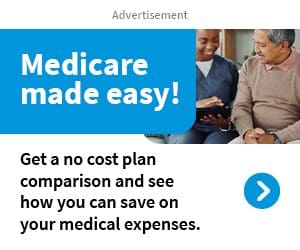Key Takeaways:
- Medicare Part D offers crucial prescription drug coverage that can help reduce out-of-pocket costs for eligible individuals.
- By understanding how Medicare Part D works, beneficiaries can find plans that meet their health and budget needs.
Tired of High Prescription Costs? Here’s Why Medicare Part D Might Be Exactly What You Need
Prescription drug costs can quickly become a burden for individuals, especially as they age and require regular medications. If you’re finding it hard to keep up with high out-of-pocket costs, Medicare Part D could provide the solution you’re looking for. This program was specifically designed to help Medicare beneficiaries cover the costs of their prescription drugs, ensuring that individuals don’t have to choose between necessary medications and other important expenses.
In this article, we’ll explore how Medicare Part D works, its benefits, and why it might be the right choice for you.
What Is Medicare Part D?
Medicare Part D is a federal program that provides prescription drug coverage to individuals who are enrolled in Medicare. Unlike traditional Medicare (Parts A and B), which covers hospital and medical expenses, Part D focuses solely on helping to lower the cost of prescription medications. This program is voluntary and works as a supplement to your original Medicare coverage. You can enroll in Medicare Part D through private insurance companies that are approved by Medicare.
How Does Medicare Part D Work?
When you enroll in Medicare Part D, you gain access to a list of covered medications (often referred to as a formulary), which can include a range of generic and brand-name drugs. The formulary is organized into tiers, with different cost levels depending on the medication. For example, generic drugs are typically found in lower tiers, resulting in lower copays, while brand-name drugs may be more expensive and found in higher tiers.
Medicare Part D plans also come with a variety of features, such as annual deductibles and copayments, which affect the total cost of your prescriptions. Once you’ve reached a certain spending threshold (known as the initial coverage limit), you may enter a coverage gap commonly referred to as the “donut hole,” where you’ll pay a higher percentage of your drug costs. However, after spending a certain amount, you move into catastrophic coverage, and your out-of-pocket costs drop significantly.
Who Can Benefit the Most from Medicare Part D?
Medicare Part D is designed to help a wide range of people, particularly those who have ongoing prescription drug needs. While some individuals may find that their prescription costs are manageable without Part D, for many, this program provides significant financial relief.
Seniors and Those with Chronic Conditions
If you’re a senior or someone who lives with a chronic condition requiring long-term medications, enrolling in Medicare Part D can make a big difference. Prescription drug costs often increase over time, and it’s common for individuals with multiple health conditions to need several medications to manage their well-being. Without Medicare Part D, these costs can become overwhelming.
Individuals on Limited Budgets
For those living on a fixed income, the rising cost of medications can severely impact their financial stability. Medicare Part D offers relief by spreading out costs over time and making medications more affordable. This can provide peace of mind for individuals who are worried about how they will afford the prescriptions they need to maintain their health.
Choosing a Medicare Part D Plan
It’s essential to carefully review and select a Medicare Part D plan that fits your needs. Plans can vary widely in terms of premiums, deductibles, and the medications they cover. When choosing a plan, you should:
- Compare formularies: Not all plans cover the same medications, so it’s important to ensure that the drugs you take regularly are included in the formulary.
- Consider the costs: While it’s tempting to select a plan with a low premium, other factors such as deductibles and copayments can impact the total cost of your prescription coverage.
- Look at the plan’s pharmacy network: Some Medicare Part D plans have preferred pharmacy networks, which may offer lower costs when you fill your prescriptions. Make sure your local pharmacy is included in the plan’s network to avoid paying higher prices.
What Happens If You Don’t Enroll in Medicare Part D?
It’s important to be aware that if you delay enrollment in Medicare Part D and do not have other creditable drug coverage, you may face a late enrollment penalty. This penalty is added to your monthly premium for as long as you have Part D, and it increases the longer you wait to enroll. Therefore, even if you don’t currently take many medications, it’s often a good idea to enroll in a Medicare Part D plan when you first become eligible to avoid this penalty in the future.
The Impact of Medicare Part D on Prescription Drug Costs
One of the main reasons people enroll in Medicare Part D is to save money on prescription drugs. Here’s how the program works to reduce these costs:
- Negotiated Discounts: Private insurance companies that offer Medicare Part D plans can negotiate lower prices with drug manufacturers, which helps reduce the cost of medications for beneficiaries.
- Catastrophic Coverage: After reaching a certain level of spending, Medicare Part D kicks in with catastrophic coverage, significantly reducing out-of-pocket costs. This is especially beneficial for individuals with high drug expenses.
- Tiered Drug Pricing: The tiered structure of drug pricing allows beneficiaries to access generic medications at lower costs while still having access to more expensive brand-name drugs if needed.
Practical Tips for Maximizing Medicare Part D Benefits
While Medicare Part D offers substantial savings on prescription drugs, there are several strategies you can use to maximize your benefits and keep costs low:
Use Generic Medications When Possible
Generic drugs are typically much more affordable than their brand-name counterparts and are just as effective. Many Medicare Part D plans encourage the use of generics by placing them in lower-cost tiers. If your doctor prescribes a brand-name drug, ask if there’s a generic version available that you can take instead.
Compare Pharmacies
Not all pharmacies charge the same price for medications, even if they’re covered under the same Medicare Part D plan. By comparing prices at different pharmacies in your area or using a preferred pharmacy within your plan’s network, you may be able to lower your prescription drug costs.
Take Advantage of Preventive Services
Medicare Part D is often paired with preventive services available through Medicare Part B. These services can help you stay on top of your health and potentially avoid the need for more expensive medications in the future. Regular check-ups, screenings, and vaccines can help you manage your health and catch conditions early.
Staying Informed About Changes in Medicare Part D
Each year, Medicare Part D plans can change their premiums, formularies, and other aspects of coverage. It’s important to stay informed about these changes to ensure your plan continues to meet your needs. During Medicare’s annual open enrollment period, you have the opportunity to review your current plan and switch to a different one if necessary. This flexibility allows you to adjust your coverage based on any changes in your health or prescription drug needs.
Why Medicare Part D Could Be the Right Solution for You
With the rising cost of prescription drugs, Medicare Part D offers a valuable option for reducing out-of-pocket expenses and ensuring access to necessary medications. Whether you have ongoing health conditions that require regular prescriptions or simply want peace of mind knowing you’re covered in case of future needs, Medicare Part D can help protect your health and your finances.
By enrolling in a plan that suits your needs, you can better manage the cost of your medications and avoid the financial strain that high drug prices often cause. With various plans available, there’s likely one that fits both your budget and your medical requirements.
How to Get More Information
Navigating Medicare can be complex, but there are resources available to help you make an informed decision. You can visit the official Medicare website or connect with a licensed insurance agent to learn more about your options and find a plan that works for you.
Contact Information:
Email: [email protected]
Phone: 9845552345










